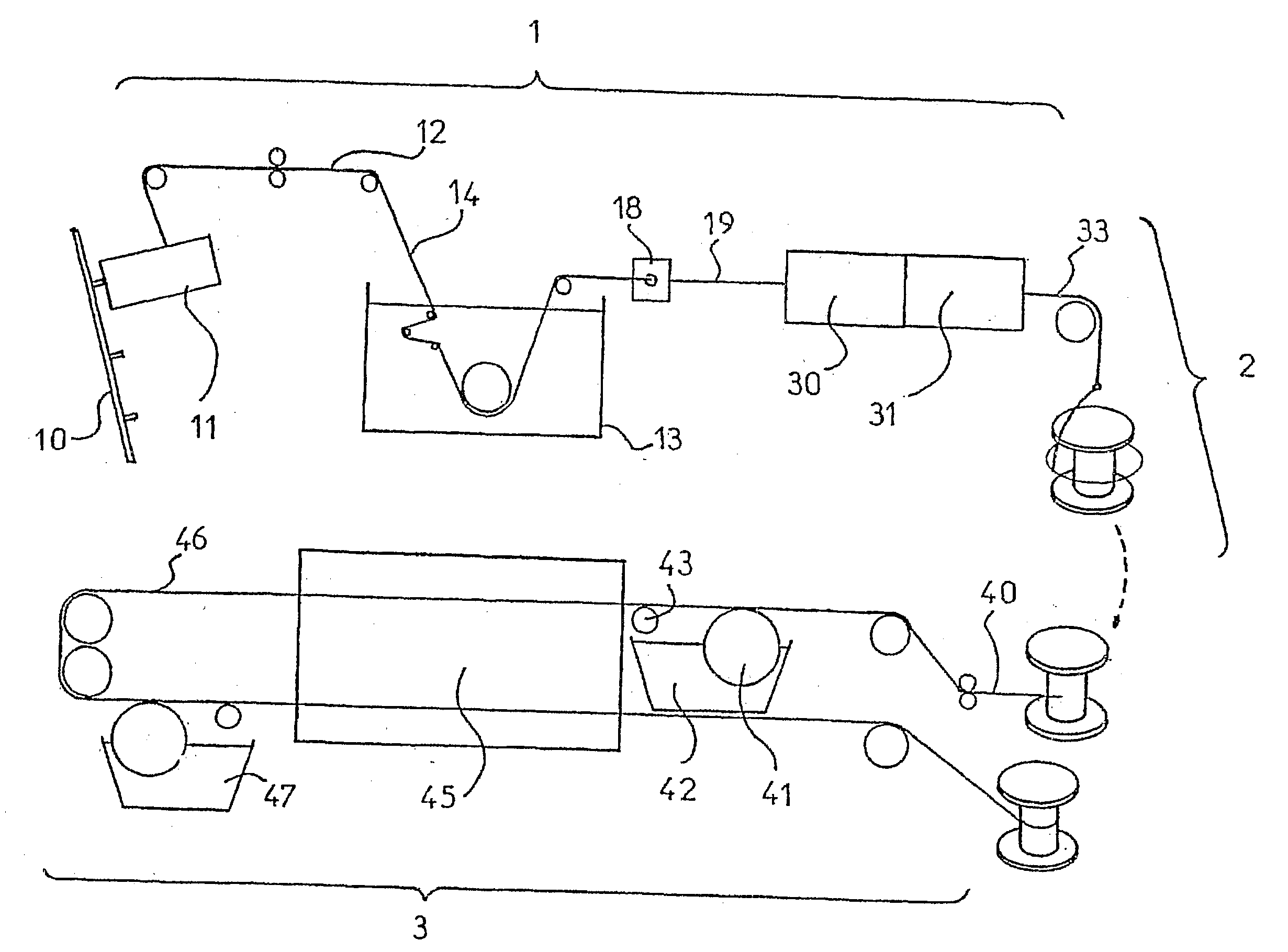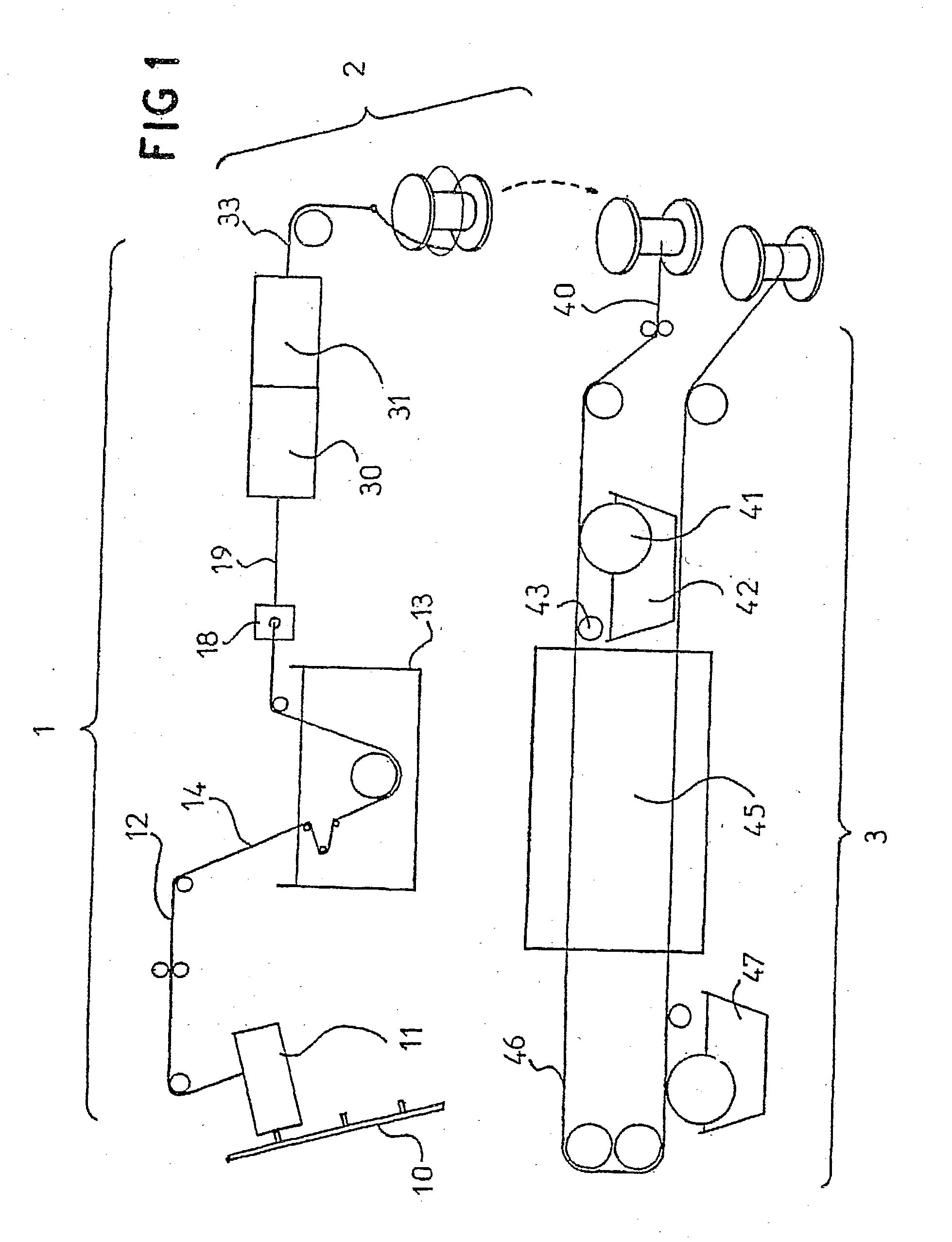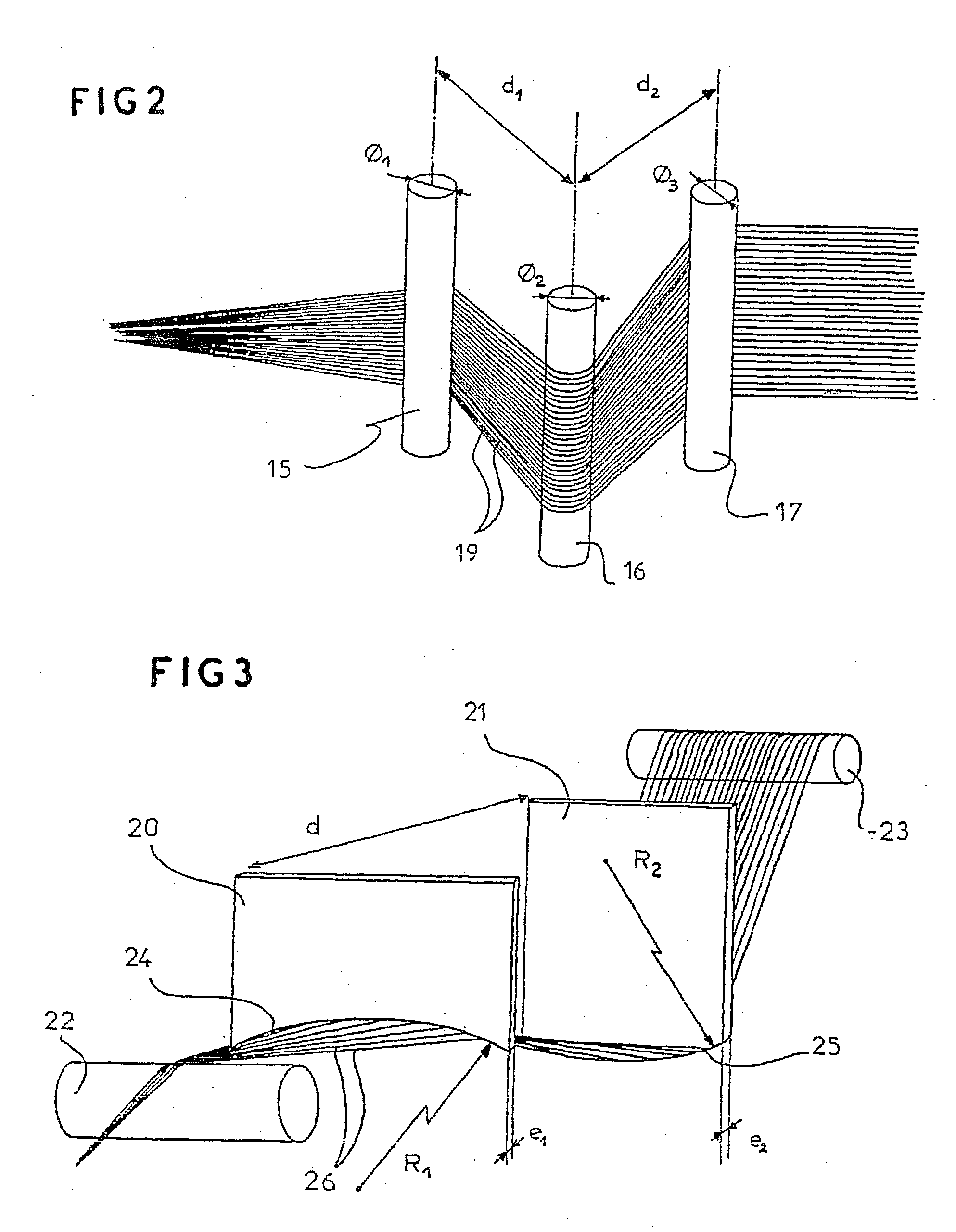Method for the production of a carbon fiber-based reinforcing element for tires
a technology of carbon fiber and reinforcing elements, which is applied in the direction of tires, vehicle components, textiles and paper, etc., can solve the problems of poor fatigue behavior, low tensile strength of fibers, and inability to allow the core fibers to be sufficiently impregnated
- Summary
- Abstract
- Description
- Claims
- Application Information
AI Technical Summary
Benefits of technology
Problems solved by technology
Method used
Image
Examples
example 2
[0081] A fiber sold by Toray under the reference TORAYCA-700 GC 4 12K, corresponding to a yarn of 800 tex overall linear density and comprising 12 000 filaments, was used. The tension with which the fiber was delivered from the creel was 45 grams. Each fiber was splayed out by three bars 1 millimeter in diameter arranged in an isosceles triangle with a base of 20 mm and a height of 8 mm placed a few centimeters before the impregnation tank, and two bars 1 mm in diameter separated by 34 mm immersed in the impregnation tank.
[0082] The impregnation solution was the same as that of example 1, with a solids content adjusted to 330 g / kg.
[0083] The speed of the fibers through the impregnation bath was about 20 meters per minute. On leaving the impregnation bath, the yarn was passed through a die 1.1 millimeters in diameter and the fiber then passed through a curing oven, again at a speed of 20 meters per minute. The temperature of the oven was 280.degree. C. The length of the oven was 3 me...
example 3
[0086] A fiber sold by Toray under the reference TORAYCA-400 HB 40D 6K, corresponding to a yarn of 400 tex overall linear density and comprising 6000 filaments, was used. The tension with which the fiber was delivered from the creel was 50 grams. Each fiber was splayed out by three bars 1 millimeter in diameter arranged in an isosceles triangle with a base of 20 mm and a height of 8 mm placed a few centimeters before the impregnation tank, and two bars 1 mm in diameter separated by 34 mm immersed in the impregnation tank.
[0087] The impregnation solution was obtained by mixing:
[0088] a first part A composed of:
[0089] 36 liters of deionized water,
[0090] 4 liters of 20.5% aqueous ammonia of Vaissire Favre brand,
[0091] 10 kilograms of PENACOLITE of reference R2170 (75% concentration) sold by Indspec Chemical Corp.,
[0092] 27.2 kilograms of 41% urea of Vaissire Favre brand;
[0093] a second part B composed of:
[0094] 36 liters of deionized water,
[0095] 286 kilograms of Zetpol B latex sold by...
example 4
[0110] A fiber identical to that of example 3 was used. The tension with which the fiber was delivered from the creel was 30 grams. Each fiber was splayed out by two bars 1 millimeter in diameter, separated by 39 mm, that were immersed in the coating tank.
[0111] The impregnation solution was the same as that used in example 3, with a solids content adjusted to 330 g / kg.
[0112] The speed of the fibers through the impregnation bath was about 20 meters per minute. On leaving the impregnation bath, the yarn was passed through a die 0.81 millimeters in diameter and the fiber then passed through a curing oven, again at a speed of 20 meters per minute; the temperature of the oven was 180.degree. C. The length of the oven was 3 meters. On leaving the oven, the fiber had a coating, corresponding to the amount of cured impregnation solution material, representing approximately 19.8% by dry weight of the yarn.
[0113] The fibers thus obtained were then twisted as in example 3, but under a tension...
PUM
| Property | Measurement | Unit |
|---|---|---|
| linear density | aaaaa | aaaaa |
| linear density | aaaaa | aaaaa |
| linear density | aaaaa | aaaaa |
Abstract
Description
Claims
Application Information
 Login to View More
Login to View More - R&D
- Intellectual Property
- Life Sciences
- Materials
- Tech Scout
- Unparalleled Data Quality
- Higher Quality Content
- 60% Fewer Hallucinations
Browse by: Latest US Patents, China's latest patents, Technical Efficacy Thesaurus, Application Domain, Technology Topic, Popular Technical Reports.
© 2025 PatSnap. All rights reserved.Legal|Privacy policy|Modern Slavery Act Transparency Statement|Sitemap|About US| Contact US: help@patsnap.com



